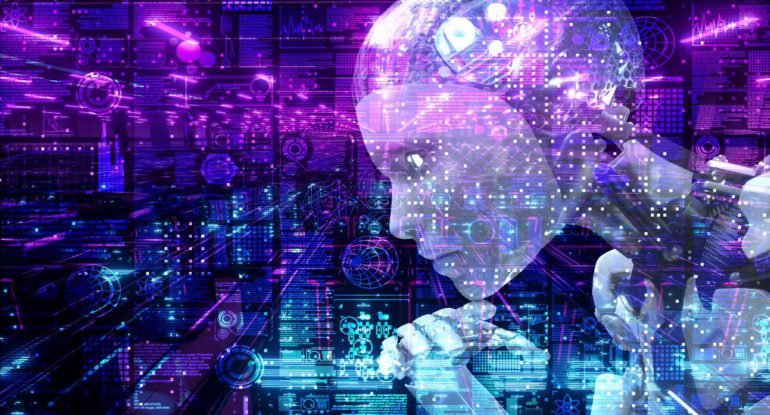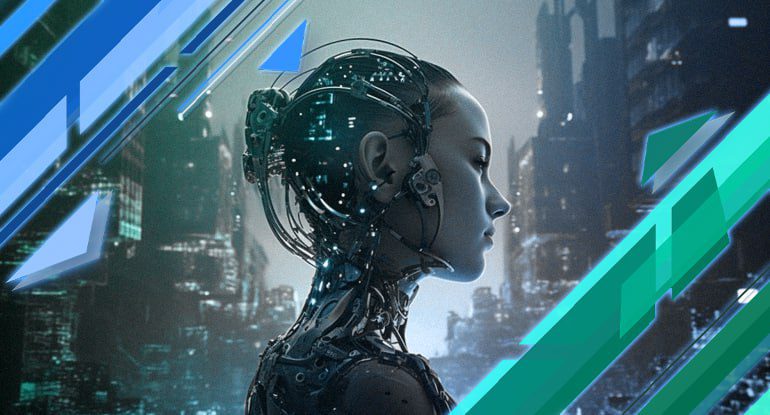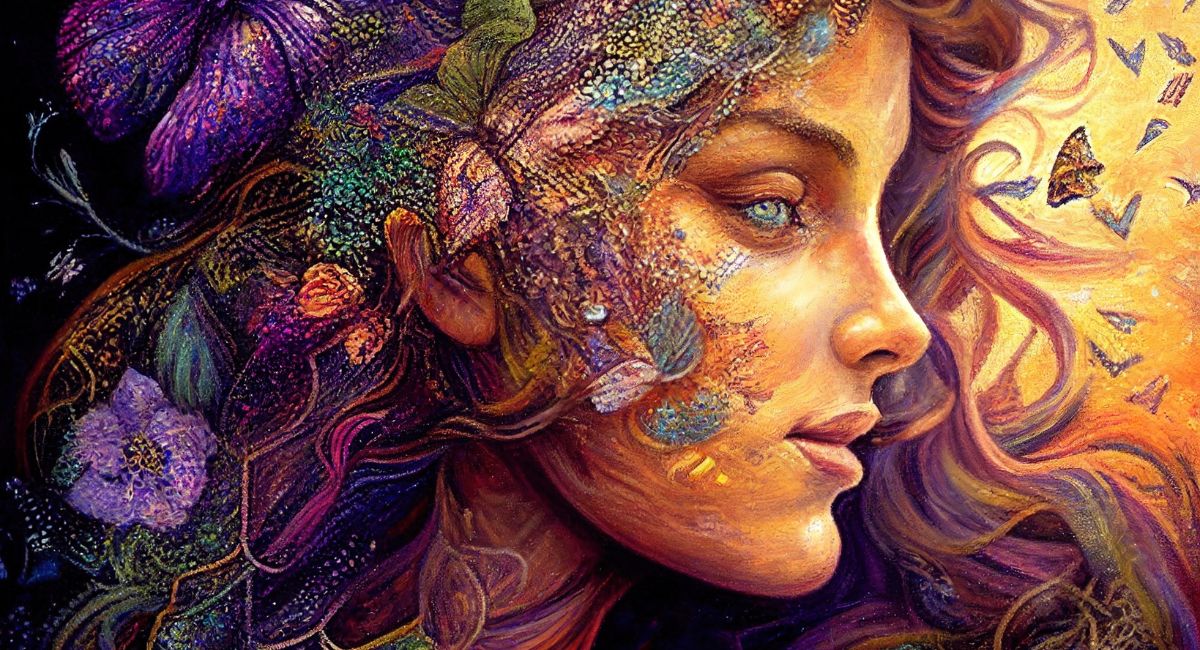Top 10 Intriguing Reasons Learning Generative AI Is Important To Have A Career In Blockchain

Generative AI is still a young adult in the fast-paced world of technology, but its influence on blockchain is undeniable. This dynamic duo is transforming how we create, interact with, and leverage blockchain technology.
One of the most visible impacts is on NFTs (Non-Fungible Tokens). Gone are the days of limited edition drops with static artwork. Generative AI empowers artists and developers to craft vast NFT collections brimming with unique traits and variations. Imagine a collection of a thousand astronaut NFTs, each with distinct clothing, accessories, and facial expressions, all programmatically generated by AI. This opens doors for never-before-seen levels of creativity and rarity in the NFT space. Furthermore, user-friendly generative AI tools are democratizing NFT creation, allowing even those without artistic expertise to participate in the NFT revolution.
The impact extends beyond aesthetics. Generative AI is breathing life into dApps (decentralized applications). Personalized user interfaces, dynamic avatars, and ever-evolving in-game content – these are just a few ways generative AI is enhancing the user experience within dApps. Theta Network, for instance, leverages generative AI to personalize video recommendations for users on their blockchain-based streaming platform. This keeps users engaged and fosters a more enjoyable experience within the dApp.
DeFi (Decentralized Finance) is also feeling the generative AI love. By modeling complex financial instruments, generative AI can create synthetic assets that mimic their behavior on the blockchain. This paves the way for innovative DeFi products and broader participation in this exciting financial landscape. Umami Finance, a DeFi protocol, utilizes AI to generate synthetic assets that track traditional stocks and commodities. This allows DeFi users to gain exposure to these markets without leaving the familiar territory of the blockchain.
Security, a cornerstone of blockchain technology, is also being bolstered by generative AI. Here’s where things get a bit technical. Generative AI can be used to create synthetic data, essentially mimicking potential attacks on a blockchain system. This “adversarial training” exposes potential weaknesses before they can be exploited by malicious actors. Think of it as a stress test for blockchain security, powered by AI. ChainSecurity, a company focused on blockchain security, utilizes this approach to identify and patch vulnerabilities in smart contracts, the building blocks of many DeFi applications.
The Metaverse, that immersive digital frontier, is another area ripe for generative AI’s influence. Imagine personalized learning experiences within the Metaverse, tailored to your individual learning style by an AI-powered tutor. Mursion, a VR education company, is already demonstrating the potential of AI in this domain. By personalizing learning journeys within virtual reality environments, generative AI has the potential to revolutionize education within the Metaverse.
The synergy between generative AI and blockchain is not merely a fad; it’s a glimpse into the future. As both technologies mature, we can expect even more groundbreaking applications to emerge. From bridging the gap between the physical and digital worlds to powering decentralized content creation, the future of blockchain is being actively shaped by the transformative power of generative AI. This dynamic duo is poised to unlock a treasure trove of possibilities, pushing the boundaries of what’s possible in the exciting world of blockchain technology.
Also, read – Revolutionizing the Future: Exploring Real Life Applications of Generative AI
Top 10 Reasons Generative AI is the Missing Piece in Your Blockchain Toolkit

The world of blockchain technology is brimming with potential, but for developers seeking a competitive edge, there’s a hidden gem – generative AI. This powerful combination unlocks a treasure trove of possibilities, propelling your projects to new heights. Here’s why generative AI is an essential skillset to add to your blockchain toolkit in 2024:
1. Revolutionizing NFT Creation:
-
Challenge: Current NFT creation processes can be time-consuming and require artistic expertise.
-
Generative AI Advantage: Imagine using AI to generate unique and programmatically rare NFT collections, tailored to specific themes or storylines. This allows artists and developers to create vast and diverse NFT ecosystems, while simultaneously reducing creation time.
- Example: Art Blocks, a platform for generative art NFTs, utilizes creative coding to produce unique and dynamic artworks. This exemplifies the potential of generative AI to democratize NFT creation and open doors for new artistic expressions within the NFT space.
2. Building Engaging dApps:
-
Challenge: Standing out in the sea of dApps requires a unique user experience (UX).
-
Generative AI Advantage: Imagine incorporating AI-powered features like personalized avatars or dynamic in-game content within your dApp. Generative AI can craft ever-evolving experiences that keep users engaged and coming back for more.
- Example: Theta Network, a blockchain for video streaming, utilizes generative AI to personalize video recommendations for users. This enhances user engagement and fosters a more enjoyable viewing experience on the platform.
3. The Future of DeFi with Synthetic Assets:
-
Challenge: Creating complex synthetic assets within DeFi protocols can be a challenge.
-
Generative AI Advantage: Generative AI can be used to model real-world financial instruments and generate synthetic assets that mimic their behavior. This opens doors for innovative DeFi products and broader participation in decentralized finance.
- Example: Umami Finance, a DeFi protocol, utilizes AI-powered oracles to generate synthetic assets that track the performance of traditional stocks and commodities. This allows DeFi users to gain exposure to traditional financial markets without leaving the blockchain ecosystem.
4. Enhanced Security and Fraud Detection:
-
Challenge: Blockchain security is crucial, but potential vulnerabilities exist.
-
Generative AI Advantage: Generative AI can be used to create adversarial training examples, essentially synthetic data that exposes potential weaknesses in blockchain systems. This helps developers identify and patch vulnerabilities before they can be exploited by malicious actors.
- Example: ChainSecurity, a blockchain security company, utilizes generative AI to create test cases that expose potential vulnerabilities in smart contracts. This proactive approach helps to identify and mitigate security risks within the blockchain ecosystem.
5. Personalized Learning Experiences in the Metaverse:
-
Challenge: Creating a truly immersive and engaging learning experience in the Metaverse requires tailoring content to individual users.
-
Generative AI Advantage: Imagine an AI-powered tutor within the Metaverse that personalizes learning journeys based on a student’s strengths, weaknesses, and learning style. Generative AI can craft dynamic educational content that keeps students engaged and motivated.
- Example: Mursion, a company focused on VR education, utilizes AI to personalize learning experiences within virtual reality environments. This approach has the potential to revolutionize education within the immersive world of the Metaverse.
6. Bridging the Gap Between Physical and Digital Worlds:
-
Challenge: Creating a seamless connection between the physical and digital worlds within blockchain applications can be complex.
-
Generative AI Advantage: Generative AI can be used to create realistic simulations of physical objects or environments. Imagine using AI to generate digital twins of physical assets for use within DeFi applications or Metaverse experiences.
- Example: TwinStrand, a blockchain-based platform, utilizes AI to create digital twins of physical assets like real estate or artwork. This allows for fractional ownership and secure trading of these assets within a decentralized ecosystem.
7. Powering Decentralized Content Creation:
-
Challenge: Monetizing creative content within Web3 can be challenging for artists and creators.
-
Generative AI Advantage: Imagine AI-powered platforms that allow creators to generate unique content, like music or video, and sell it directly to fans through NFTs or other blockchain-based mechanisms. This empowers creators and fosters a new era of decentralized content ownership.
- Example: A decentralized music platform could utilize generative AI to create personalized music mixes for users. These mixes could then be sold as NFTs, allowing artists to capture value directly from their creations.
Building a Bridge Between Blockchain and Generative AI: A Symbiotic Future

Blockchain technology and generative AI represent two of the most transformative forces shaping our digital landscape. While blockchain empowers a decentralized future with secure and transparent transactions, generative AI unlocks the potential for boundless creativity and intelligent automation. At the intersection of these two technologies lies a future brimming with possibilities. Let’s delve into the exciting potential of building a bridge between blockchain and generative AI:
Unveiling the Power of the Pairing:
- Revolutionizing Decentralized Content Creation:
Blockchain fosters a creator-centric economy, but generating high-quality content like music, art, or 3D models can be time-consuming. Generative AI bridges this gap. Imagine artists using AI to create unique variations of their work as NFTs, or musicians leveraging AI to generate personalized soundtracks for limited-edition releases. This empowers creators to explore new avenues for expression and monetization within the decentralized space.
- Building a Thriving Metaverse:
The metaverse, a virtual world powered by blockchain, relies heavily on rich and diverse digital assets. Generative AI can be harnessed to populate the metaverse with landscapes, avatars, and objects, creating a more immersive and engaging user experience. Additionally, AI can generate synthetic data for training AI security systems, safeguarding the metaverse from malicious activity.
- Enhancing Decentralized Finance (DeFi):
DeFi applications require robust data for tasks like risk assessment and credit scoring. However, obtaining high-quality, real-world data can be challenging. Generative AI can create synthetic datasets that mimic real-world financial behavior while preserving user privacy. These anonymized datasets can then be used to train AI models within DeFi applications, improving their accuracy and efficiency.
- Evolving the NFT Landscape:
The NFT market thrives on unique and desirable assets. Generative AI can be employed to create distinctive NFT collections with varying levels of rarity and complexity. Furthermore, generative AI can be used to analyze NFT market trends and identify undervalued assets, providing valuable insights for investors and collectors.
- Empowering Decentralized Autonomous Organizations (DAOs):
DAOs leverage collective decision-making for governance. Generative AI can be a powerful tool for DAOs. Imagine a DAO using AI to generate creative marketing campaigns or leverage AI to write and translate community proposals, fostering smoother communication and collaboration within the DAO.
Engineering the Bridge: Key Considerations
Building a bridge between blockchain and generative AI requires careful consideration of various aspects:
- Interoperability and Standards:
For seamless collaboration, ensuring interoperability between blockchain platforms and generative AI frameworks is crucial. Standardized data formats and communication protocols will enable smooth data exchange and integration of AI models within blockchain applications.
- Security and Privacy:
Security and privacy are paramount in both blockchain and generative AI. Blockchain’s secure infrastructure can be leveraged to ensure the integrity and provenance of AI models. Additionally, privacy-preserving techniques within generative AI, like federated learning, can minimize data sharing risks.
- Scalability and Efficiency:
Scalability is critical for both blockchain and generative AI. Blockchain platforms need to handle the increased demand for storing and processing AI model data efficiently. Similarly, generative AI models need to be optimized for efficient training and inference within the blockchain ecosystem.
- Ethical Considerations:
Ethical considerations are crucial when merging these powerful technologies. Biases within training data for generative AI models can lead to biased outcomes. Careful selection of training data and ongoing monitoring of AI models within blockchain applications are essential to ensure fairness and transparency.
Building Your Expertise: A Roadmap to Success
To become a key player in this exciting space, consider these steps:
- Foundational Knowledge: Gain a solid understanding of both blockchain technology and generative AI. Explore concepts like distributed ledger systems, consensus mechanisms, different generative AI models (GANs, VAEs), and their applications. Online courses, tutorials, and reputable blogs can provide a strong foundation.
- Stay Updated: The landscape of both blockchain and generative AI is constantly evolving. Regularly follow industry news, attend conferences, and engage with online communities to stay abreast of the latest advancements and best practices.
- Develop Programming Skills: While not always mandatory, proficiency in programming languages like Python will equip you to experiment with generative AI tools and frameworks, facilitating the integration of AI models with blockchain applications.
- Contribute to Open-Source Projects: Participating in open-source projects focused on integrating blockchain and generative AI is an excellent way to gain practical experience and collaborate with like-minded individuals.
Conclusion:
The world of blockchain is rapidly evolving, and generative AI is poised to be a game-changer. By embracing this powerful technology, you can unlock new possibilities for content creation, financial innovation, and community building within the blockchain ecosystem. As the future unfolds, the ability to leverage both blockchain and generative AI will be a valuable asset for anyone seeking a successful and impactful career in this exciting space. So, dive in, explore the potential, and become a key player in shaping the future of blockchain with the power of generative AI.




























































